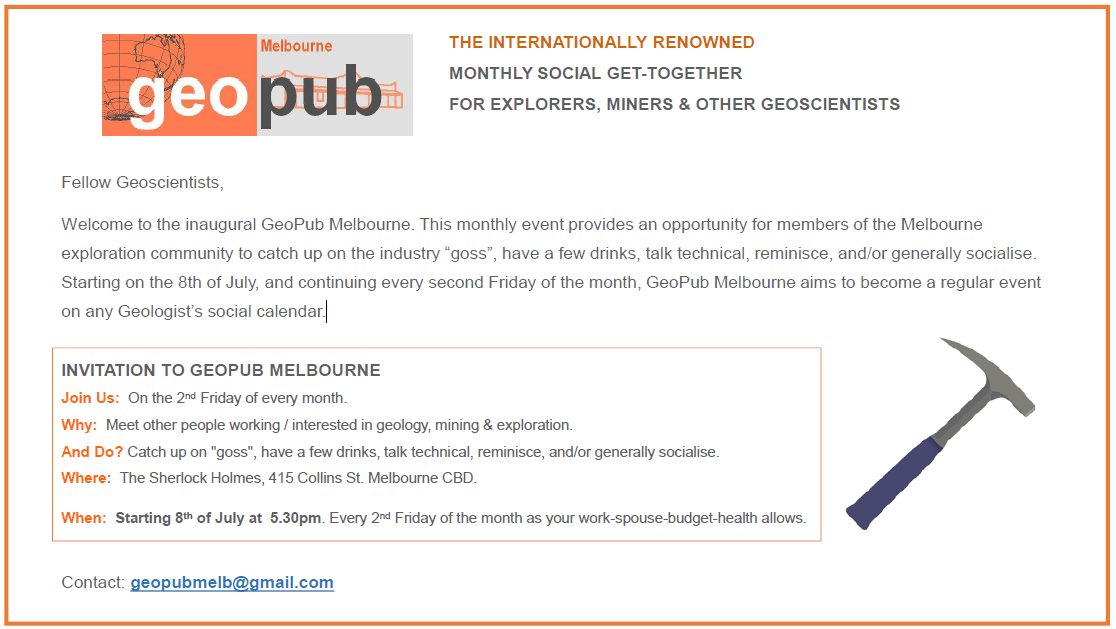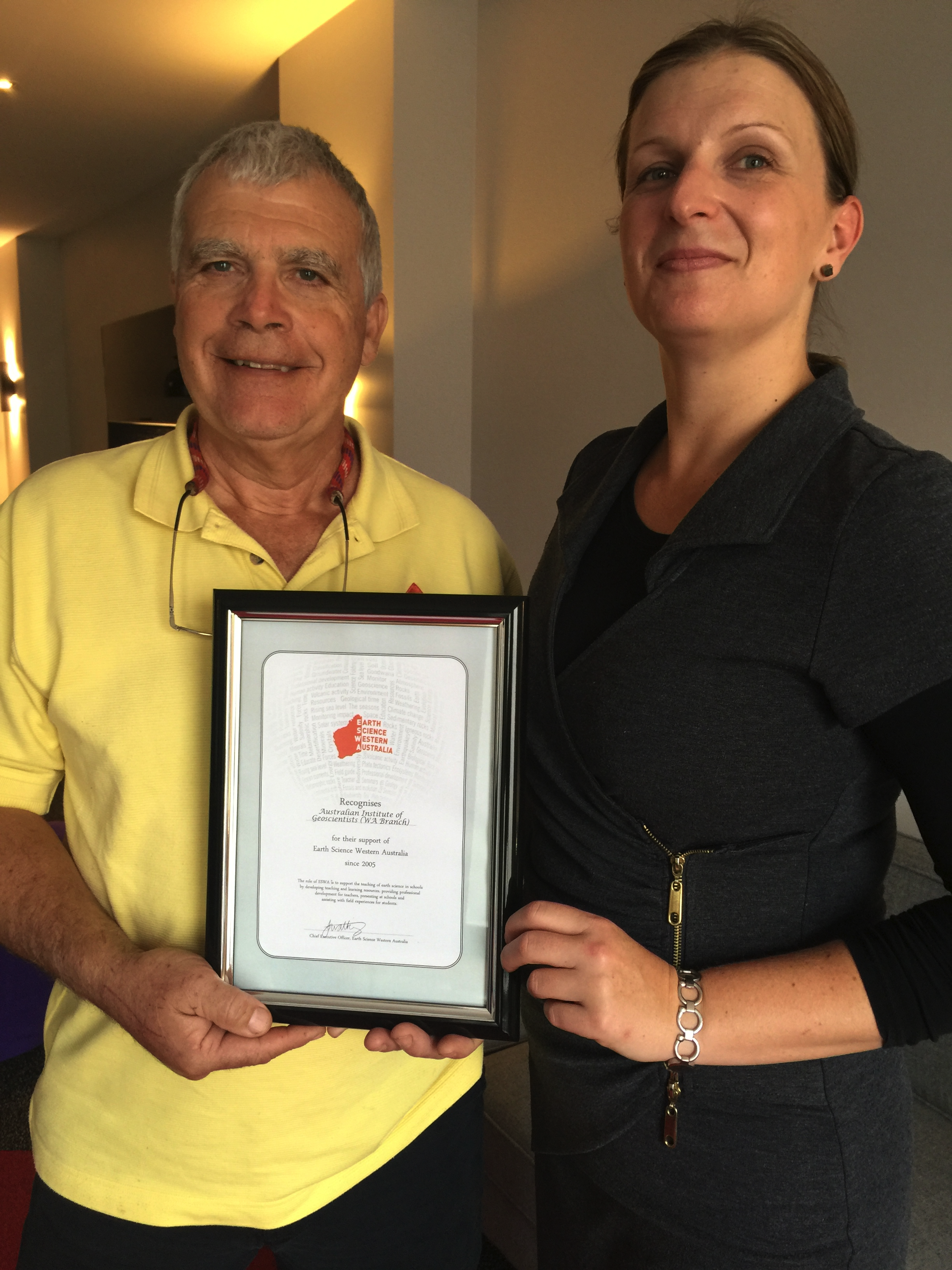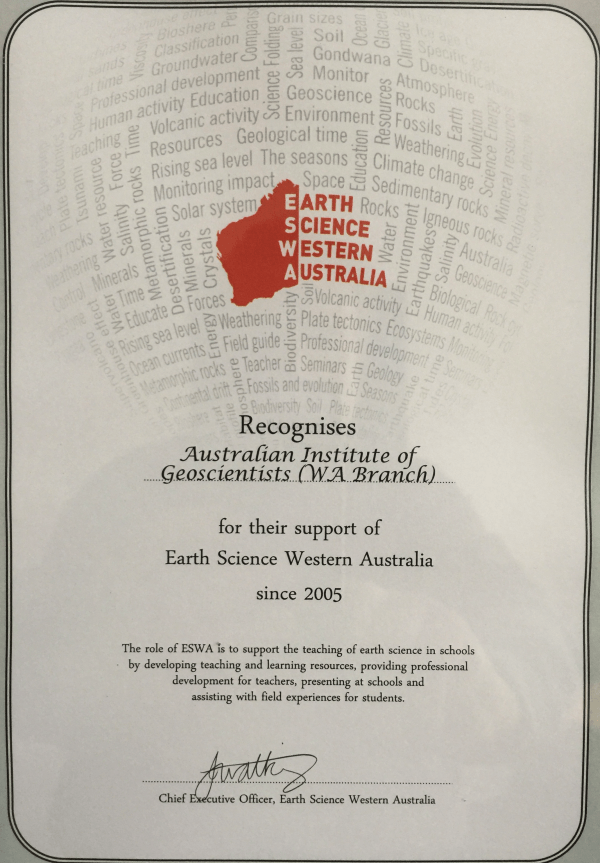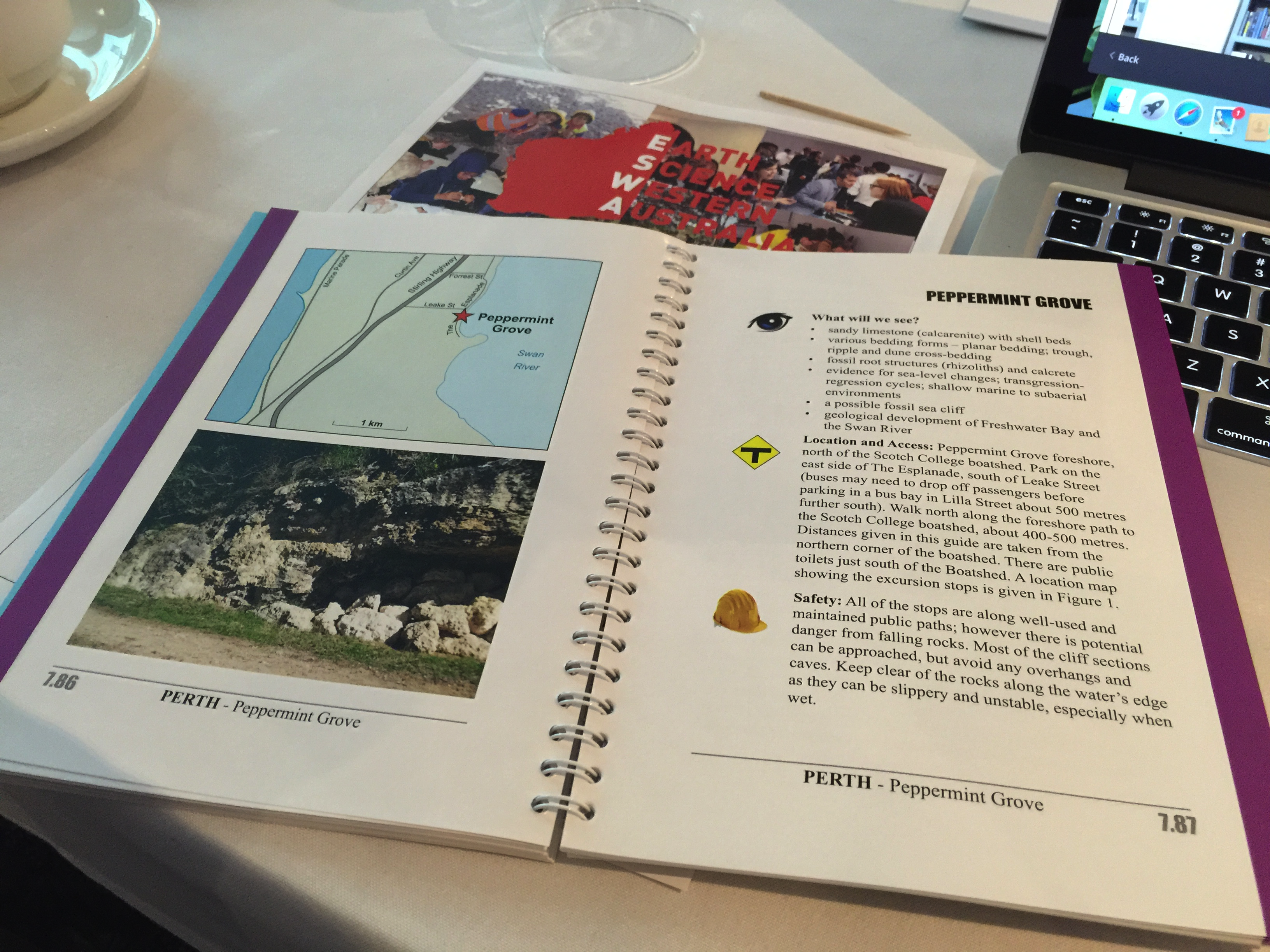GeoPub get-togethers provide an opportunity for geoscientists to catch up on the industry “goss”, have a few drinks, talk technical, reminisce, and/or generally socialise.
Starting on the 8th of July, and continuing every second Friday of the month, GeoPub Melbourne aims to become a regular event
on any geologist’s social calendar.
GeoPub Melbourne will be held at The Sherlock Holmes, 415 Collins St. Melbourne CBD
Contact geopubmelb@gmail.com for further information.

![]()
Extracting knowledge from limited data is arguably one of the greatest challenges inherent in the evaluation of all mineral resources.
Drilling, essentially, provides “points of observation” that must be put into a three dimensional context by carefully analysing variability exhibited in geological, geotechnical and grade / mineral composition parameters in order to develop a robust, reliable interpretation of deposit structure and resource potential. Best practice is beginning to insist that geoscientists involved in resource evaluation also attempt to develop an understanding of inherent risk in geological models and grade estimates which, in turn, may influence development of mining plans and practices.
The geological knowledge for any deposit evolves with every new drill hole and the changes must be continuously assessed for their signifance by the project team.
As explorers are forced to look deeper and in more challenging geophysical environments, is becoming more important for geoscientists to fine-tune their survey methods in order to gain maximum value from limited data sets. Two examples of this continual improvement will be discussed from the Eagle Ni-Cu Mine in Michigan, USA. The high grade Eagle Ni-Cu mine is hosted by an ultramafic Proterozoic magmatic feeder that intruded into the metasediments of the Proterozoic Baraga Basin. There is limited outcrop in the area due to a covering of glacial till and a thick portion of the Baraga Basin is very conductive and magnetic due to pyrrhotitic sediments. The till thickness varies from 0 to over 200 m and complicates the interpretation of gravity survey data. The very conductive metasediments limits the depth of penetration of conventional surface based ground EM surveys and complicates the interpretation and limits the radius of detection of borehole TEM surveys. The ability to interpret borehole TEM surveys was improved significantly by lowering the base frequency of the transmitter in order to allow the host response to decay enough that the very conductive, constrained massive sulfide response could be better observed. Complex borehole TEM responses with multiple off-hole type responses became more conventional in nature and the off-hole response of the Eagle mineralization could be detected. Till thickness had previously been determined by drill hole intercepts and the resonant frequency of passive seismic noise. To extend the coverage of these values, frequency domain data from a Resolve survey was modeled using 1D inversion software over the entire exploration block. Once the till thickness was interpreted, the gravitational response of the till was computed and subtracted from the airborne and ground gravity surveys. This improved the interpretation of the gravity data.
The talk is presented by: Dick West, Technical Director, Exploration Technology & Group Resources, Lundin Mining Corporation.
Recorded on March 3, 2015, as part of the Geosoft Explorer Speaker Series presented at the PDAC.
Click here to view the video on the Geosoft web site (user registation required)
The video is presented here with Geosoft’s permission for which AIG expresses thanks.
The AIG Council meeting last weekend discussed conducting an Australian Geoscientist Census, ideally in conjunction with other Australian Geoscience Council member societies, to better understand our profession in Australia.
Is this a gap that needs to be addressed?
The last Australian census determined that there were 9,000 geoscientists in Australia at that time. There’s another census this year. The national census, however, doesn’t delve deeper into the qualifications, disciplines and fields of practice for Australians who identify as geoscientists, which would seem to be fundamental to an understanding of the geoscience profession and a good place to start.
Do you have any thoughts on where there are gaps in our understanding of Australian geoscientists that could assist in the development of questions to include in the census? Contribute to the discussion with a comment here, via Facebook or via the AIG Linkedin Group.
The U.S. Securities and Exchange Commission (SEC) has announced a proposal to adopt CRIRSCO-compliant reporting standards for U.S. companies.
 CRIRSCO (the Committee for Mineral Reserves International Reporting Standards) has been lobbying the U.S. Securities and Exchange Commission (SEC) to adopt CRIRSCO reporting standards for many years. JORC is the model on which CRIRSCO standards has been based. CRIRSCO reporting standards are currently in official use in Australia, Canada, South Africa, throughout Europe, Brazil, Chile, Russia, and Mongolia.
CRIRSCO (the Committee for Mineral Reserves International Reporting Standards) has been lobbying the U.S. Securities and Exchange Commission (SEC) to adopt CRIRSCO reporting standards for many years. JORC is the model on which CRIRSCO standards has been based. CRIRSCO reporting standards are currently in official use in Australia, Canada, South Africa, throughout Europe, Brazil, Chile, Russia, and Mongolia.
The SEC, to date, has permitted public reporting of ore reserves only by U.S. listed companies under Industry Guide 7. In the SEC announcement, the Commission stated that the “proposed revisions are intended to provide investors with a more comprehensive understanding of a registrant’s mining properties, which should help them (investors) make more informed investment decisions”. “The proposed revisions would also modernize the Commission’s disclosure requirements and policies for mining properties by aligning them with current industry and global regulatory practices and standards”. SEC Guide 7 would be rescinded under the proposal.
The Society for Mining, Metallurgy and Exploration (SME) has had a CRIRSCO compliant code for Mineral Resource and Ore Reserve reporting in place for a number of years, but adherence to the code was not possible for public reporting due to SEC requirements.
This comes as U.S. mining companies have said their international competitors already report their potential reserves, which help investors to value a firm and have sought to fix this disadvantage.
U.S. National Mining Association spokesman Luke Popovich lauded the move for “recognizing this problem by aligning our material resource reporting with those of other mining regions.”
The proposal will also potentially benefit Australian and Canadian companies that are also listed on U.S. exchanges by simplifying their annual reporting requirements.
The SEC will also seek comment from the public on whether it should require companies to provide investors with a more-detailed discussion on how they are planning to manage greenhouse gas emissions and workforce health, safety and their well-being.
The SEC will seek comments for two months and will go through a vote on the measures ahead of implementation.
The AIG Council held its annual strategic planning meeting in Perth last weekend.
The AIG Council usually meets every two months by teleconference. The first Council meeting following the AGM is the one time that Council meets face to face to provide an effective means of dealing with important strategy and governance issues, as well as learning more about their colleagues who they will be working with remotely throughout the remainder of the year.
Mike Erceg was unanimously appointed as AIG President for 2016-2017. Mike is a Brisbane based consulting exploration geologist.
Wayne Spilsbury, past President, was appointed Vice President. Andy Wilde will take on the role of AIG Secretary and Peter Lewis will continue as Treasurer.
Michael Edwards: Ethics and Standards
Anne Tomlinson: Membership
Sam Lees: Registration Board and Legal
Tim Craske: Complaints
Kaylene Camuti: Education
Andrew Waltho: Publications
Jonathan Bell: ROPO Board Representative
Wayne Spilsbury: Professional Issues
Mike Erceg: External Relations
Tim Pippett: AIG Service Award
Genna McDonough: National Graduate Committee
Heidi Pass: National Mentoring Programme Committee
AIG’s representatives on the JORC Committee are Chris Cairns, Jacqui Coombes, Graham Jeffress and Stuart Masters.
AIG’s VALMIN Committee Representatives are Jonathan Bell, Deborah Lord, Matthew Greentree and Jeames McKibben.
Earth Science Western Australia has been delivering K-12 geoscience education training, teaching resources and lessons in schools throughout Western Australia for more than ten years.
Joanne Watkins from ESWA provided AIG Councillors with an enthusiastic presentation on the organisation’s work at the Council meeting in Perth this weekend (19th June, 2016).
AIG Vice President accepted a certificate of appreciation from Joanne Watkins for financial support for by AIG, through the Western Australian Branch, since ESWA’s inception in 2009.

AIG Vice President Wayne Spilsbury receives a certificate of appreciation from Joanne Watkins for AIG’s financial support of ESWA since its inception in 2005.

Certificate of recognising AIG’s support of ESWA since its inception in 2005.
ESWA provides in-service training for K-12 teachers, delivers lessons in Western Australia schools and produces teaching resources including field guides and textbooks meeting national earth and environmental science curriculum requirements.

ESWA field guides, available for greater Perth and the Cape to Cape area of southwest WA, and soon to be joined by a guide to the Kalgoorlie region, provide teachers with resources needed to get students into the field safely with detailed guidance on what to look for.
AIG is also a long term supporter of the Teacher Earth Science Education Program (TESEP) which provides in-service training for Earth and Environmental Science (EES) teachers in South Australia and the eastern States.
AIG is proud to be supporting the development of Australia’s next generations of geoscientists.
Julian Vearncombe presented a Distinguished Lecturer tour throughout Australia in the first half of 2016, speaking on “Value from Exploration – a geologists perspective on (gold) data, perceptions and messages”. A copy of Julian’s presentation is available here for those who couldn’t attend one of the presentations or would like to review it again.
The presentation is available in the AIG on-line library.
Membership renewal notices for 2016-2017 were emailed to members last week.
If you haven’t received yours, please check your inbox or junk mailbox.
No email? Please contact AIG’s Executive Officer Lynn Vigar to arrange a copy of your notice. Memberships renewed prior to 1 July are tax deductible in the 2015-2016 Financial Year for Australian residents.
Gold17@Rotorua will take place in Rotorua, New Zealand, from 21st to 23rd February 2017.
This is the first time the event has been held in New Zealand, and is being organized by local gold experts and the team that ran the most recent Gold’14 event in Kalgoorlie, Western Australia. The meeting will focus on developments in gold mineral systems, exploration technologies, opportunities and Pacific Margin geology and mineralisation.
Papers for presentation at the conference are being sought. The deadline for submission of abstracts is 1st August, 2016.
Complete details of the conference, associated workshops and field trips and the technical programme are provided by the conference brochure.
Please join us for what will be an informative and stimulating conference.
Supporting our future geoscientists is important. We know that. After all, they’ll need to help find the next generation of resources. But how do we support them? What is it that they’re in desperate need of? Do they even know? Maybe not. How can they when most are yet to experience their future industry? With so many questions to be answered, the AIG’s National Graduate Committee decided to try and get to the bottom of what the industry wants from our future geoscientists.
In February 2016, a survey was released to geoscientists, asking 10 questions designed to shed light on 3 main topics of interest:
We received a fantastic response, totalling 47 hours of response time from 83 geoscientists over 41 days, covering 11 areas of geoscience across 6 states and 3 countries.
Overall, there were 4 common themes revealed from the answers: Network, Attitude, Experience and Continuing Professional Development.
During the series, we’ll present the results for all the questions from the survey and highlight the 4 common themes. Each part of the series will address the 3 main topics of interest and the relevant questions. In this first part of the series, we’ll cover why graduates should persist with a career in geoscience, a topic not far from the thoughts of many geoscientists at the moment, particularly those in the early stages of their careers.
One question from the survey targeted this topic specifically. The question was “What have you loved most about your career and what job during that journey has been the highlight and why?”. Most reading this will immediately begin reflecting about their careers and for most, it will conjure up a variety of positive emotions. That’s exactly the reaction the question was designed for and the results mirror those emotions well.
As early career geoscientists, we were eager to discover and fantasise about the kind of career we might have. And fantasise we did as the most resounding response was that their career had been an adventure. Our minds immediately began racing to the adventures of people like John Campbell Miles, George B. Oglivie and Patrick Hannan to name a few. One person said “It has been a huge adventure. I often can’t believe that I am getting paid to do things that others pay money to do/see.”. Another said “The opportunity to work in some unique and amazing placing in Australia and overseas that most people never get the chance to experience (from UG in the Australian Desert to the Canadian Artic in Winter).”. Comforting and encouraging comments after a fairly unnerving few years for our profession.
Another bout of refreshing comments came as the next population of replies revealed that they had loved the challenge of a career as a geoscientist, the people they’d met, and how rewarding it had been. One comment which summarised this perfectly was “Great mix of working with both your hands and your mind, indoor and outdoor work, lots of travel to amazing places, working with a diverse mixture of people across all strata of society, getting to play with lots of cool gadgets and seeing lots and lots of fascinating rocks and mineral deposits!”. Another favourite was “Remote area exploration. Waking up to magnificent sunrises and a landscape alive with morning light. Soil sampling projects where you get a feel for the geology as you walk over it and get to observe Australian plants and wildlife up close and stumble across Indigenous artefacts (tools, tree scars, bush shelters).”.
After those comments, I’m pleased to say that an overwhelming sense of relief swept over us, like the warmth of a blanket might as a parent tucks us in after falling asleep on the couch during a night of watching horror movies. Comments like those are one of the reasons why mentor programs continue to be so successful. The wisdom and reflection from years of experience add fuel to the fire of what might be a kindling flame. Yeah we could say clichés like “toughen up” or “get over it” but everyone reading this right now started somewhere, and most of you would have had words of encouragement from or have been inspired by a mentor of which you’re grateful for. So to all the early career geoscientists out there, we encourage you to get out there and talk to all geoscientists of all ages and experience. Chances are you’ll not just learn something new but you’ll be rejuvenated with some pretty incredible stories.
Before closing, we’d like to send out an enormous thank you to all those who gave their time to respond to the questions!
Our next part of the series will cover the skills/traits considered valuable to employers. See you then!
Josh Leigh
National Graduate Committee Chairman
![]() Download the above article as a PDF.
Download the above article as a PDF.
This article was published in the AIG News 124: May 2016. Click here to download and read the full publication.